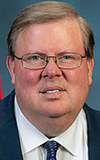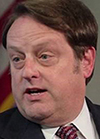
FHA Technology Initiatives Begin Bearing Fruit

For much of the past two decades, HUD and the Mortgage Bankers Association have made improving FHA technology a major priority.

“Our advocacy for FHA technology funding dates back to the early 2000s,” said Pete Mills, MBA Senior Vice President of Residential Policy and Member Engagement. “Our principle was that HUD and FHA need infrastructure improvements so that it has the ability—and the agility—to serve its borrowers and provide value to lenders and servicers.”
HUD officials, including Brian Montgomery (currently HUD Deputy Secretary) stressed to Congress the need to upgrade FHA’s outdated, paper-based infrastructure.

“When I rejoined FHA in 2018, one of my first objectives was to champion an overhaul of FHA technology,” Montgomery said in a recent video. “I knew from my previous roles inside and outside of FHA that the lack of modern technology was the single greatest pain point for the people we do business with and with FHA employees.”
After years of pressure from MBA and like-minded trade groups, Congress finally listened. In fiscal years 2019 and 2020 HUD received its first appropriations specific to FHA technology upgrades, totaling $40 million, enabling FHA to embark on a long-awaited multi-year IT modernization initiative, now called FHA Catalyst.
A partnership between the HUD’ Office of the Chief Information Officer and HUD’s Federal Housing Commissioner, FHA Catalyst is a secure, flexible, cloud-based platform that provides a modern, automated system for lenders, servicers and other FHA program participants.

“FHA Catalyst is more than just a tool; it is a complete overhaul,” said Federal Housing Commissioner Dana Wade. “It’s the biggest technology project in FHA’s history. We are replacing the antiquated patchwork of systems, some of which are more than 40 years old.”
Just as importantly, said FHA Deputy Assistant Secretary for Single-Family Housing Joe Gormley, FHA Catalyst enables FHA to efficiently and effectively manage its programs and processes, benefiting those who do business with FHA.

“We have a four-year road map to fully implement Catalyst,” Gormley said. “We’re taking a collection of different legacy systems and processes and putting a unified systems architecture in place that will enable FHA to operate efficiently in today’s digital mortgage space.”
The first component of FHA Catalyst, the Claims Module (https://www.hud.gov/program_offices/housing/FHACatalyst/claimsmodule), which debuted this year, is designed to eliminate paper submission, reduce manual errors and improve claims processing time. It is now being used by servicers of FHA-insured mortgages for single-family forward mortgage supplemental, loss mitigation home retention, reacquisition and conveyance claims, which eliminates paper and decentralized email submissions and reduces processing time.
“The success of our initial release, the Supplemental Claims module, replaced a manual, paper-based process, and streamlined the supplemental claims process for mortgage servicers and for FHA,” Montgomery said.
In recent months, FHA has made other FHA Catalyst single-family modules operational, including:
—FHA Catalyst: Case Binder Module. This module enables lenders to electronically deliver case binders instead of mailing paper binders for single-family forward mortgages and Home Equity Conversion Mortgage insurance endorsements. This automation eliminates manual, paper-based processes, provides error checks and enhances data integrity, leading to more accurate and efficient submissions. The platform also provides real-time access to case binder submission, status, and other information, which offers new tracking and analysis capabilities for lenders and FHA.
—FHA Catalyst: Single-Family Origination Module. This module will provide single family lenders doing business with FHA an integrated technology platform for submitting, managing, and monitoring loan application and other data. The first functionality under this module is the Automated Underwriting System, which offers lenders the option to obtain automated mortgage insurance eligibility indicators directly from FHA for single family forward mortgages.
—FHA Catalyst: Property Valuation Module. This module is the first functionality FHA has developed under the Property Valuation component. This module enables lenders to provide FHA with appraisals conducted for their loans. A state-of-the-art submission process provides for integration with other FHA systems, improved error checks, and enhanced data integrity. The Property Valuation Module also provides real-time access to appraisal documents, status and other information, and offers new tracking and analysis capabilities for lenders and FHA.
A few weeks ago FHA launched FHA Catalyst: Multifamily Applications Module. This module allows eligible multifamily lenders to electronically submit applications for FHA insurance on multifamily properties. This is the first multifamily module on the FHA Catalyst technology platform specifically for lenders participating in FHA’s Multifamily insurance programs.
“This technology will eliminate time-consuming process steps, so that multifamily lenders and FHA can remain focused on providing safe and affordable rental housing for the nation,” Wade said. “Our highest priority is to safeguard residents in our insured and assisted Multifamily properties, while also ensuring that FHA-insured multifamily mortgage financing continues during these times.”
Additionally, one of FHA’s first steps in deploying dynamic robotics technology started with automation of several components of HUD’s Multifamily assisted housing program contracts. This sets the stage for expanded use of this technology where needed as part of FHA Catalyst.

For its member lenders and servicers, MBA sees launch of FHA Catalyst as a win-win. “MBA has been an advocate for enhanced resources for FHA and HUD dating back to the Obama administration,” said Bill Killmer, MBA Senior Vice President of Legislative and Political Affairs. “We’ve been at the point of the spear on this.”
While Killmer and Mills noted much of the debate in Congress centered on whether such technology funding should come through the appropriations process or through an FHA-imposed user fee—MBA adamantly advocated (successfully) for appropriations—the turning point occurred when Montgomery agreed to return to HUD in 2018 as FHA Commissioner.
“The big difference this time around is that under Brian Montgomery, FHA came to the Hill with a more fully baked plan,” Mills said. They came to Capitol Hill and to the industry with a plan of what it needed and how it planned to spend it. Having that is probably what put it over the top. It gave our advocacy a tailwind.”
Gormley said Catalyst’s modular approach enables FHA to introduce elements gradually and seamlessly while making adjustments based on feedback from users. “We’ve been able to implement much more quickly than we anticipated,” he said.
Gormley noted additional capabilities will be deployed in FHA Catalyst by year-end, with nearly a dozen other modules in development:
–Migration of all claim types in FHA Catalyst, one year after the platform was initially deployed. This will eliminate all manual, paper-based claims for FHA single-family forward mortgage programs and consolidate all claim submissions to FHA Catalyst, giving lenders the ability to manage all claims in a central location.
–Loan application data via direct integration with lenders’ loan origination systems, allowing for collection of industry standard Uniform loan Application Dataset (ULAD). This further aligns FHA with the mortgage industry, creating a more efficient, seamless process. It also allows FHA to provide real time validations of loan application data, reducing processing wait times.
–Credit underwriting with detailed eligibility feedback provided to the lender. Paired with receipt of loan application data, FHA will provide program eligibility results and findings. In addition, direct access to TOTAL Scorecard with integrated scoring results and messaging.
“It’s amazing what we’ve been able to do in little more than a year,” Gormley said. “Over the next year we will continue to build out modules for our single-family and multifamily businesses. The Catalyst team is also going to be focused on replacing the legacy mainframe systems and moving those functions to the cloud. As that work progresses, we look forward to having better access to data within our portfolio that we can share with stakeholders and the public.”
